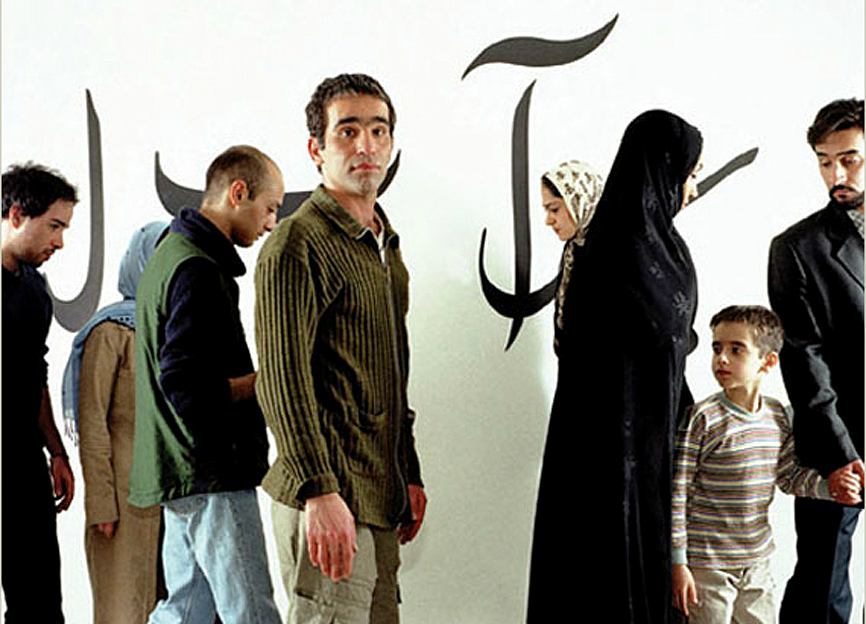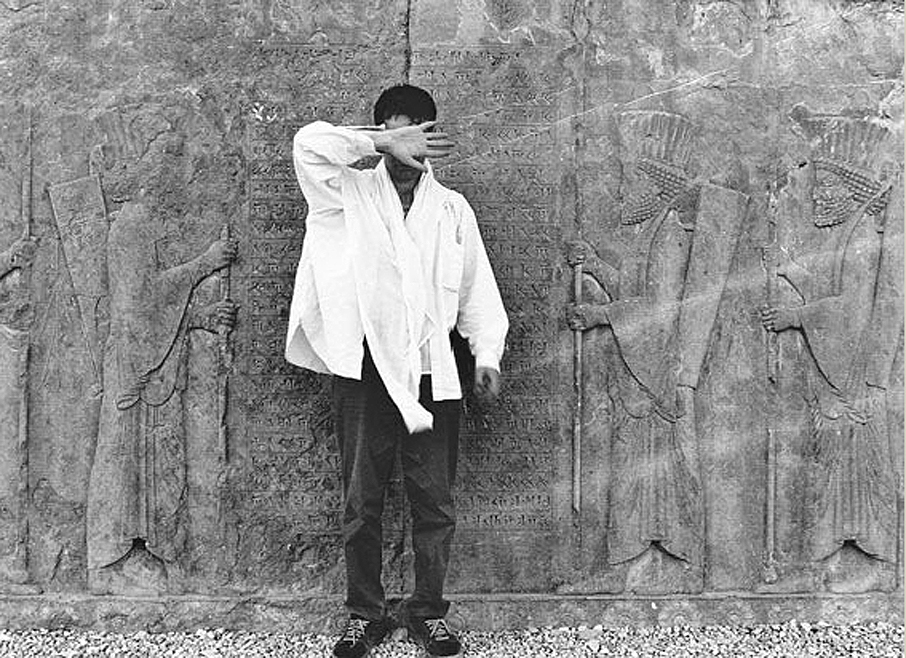
ABGINEH PHOTOGRAPHIC STUDIES INSTITUTE
موسسه تحقیقات و مطالعات عکاسی آبگینه
ABGINEH PHOTOGRAPHIC STUDIES INSTITUTE
موسسه تحقیقات و مطالعات عکاسی آبگینهمحمدابراهیم باستانی پاریزی

Mohammad Ebrahim Bastani parizi- Photo By : Ebrahim Bahrami
در کویر مطالعاتی ایران زمین و در دوران معاصر که بسیاری به دلایل مختلف با کتاب قهر کردهاند، کتاب های دکتر باستانی پاریزی ، بهانه و عرصه ای برای آشتی دوباره مردم با کتاب است، به نظر میرسد، اکنون وقت آن فرا رسیده تا بار دیگر آثار گران سنگ دکتر باستانی را بازخوانی کنیم و اگر برخی هم از خواندن این آثار تاکنون غفلت کردهاند، فرصت را غنیمت شمرده و برای بار نخست به مطالعه یکی از آثار وی بپردازند و دریابند چه گوهر نابی از کف تاریخ و ادبیات ایران زمین رخت بربسته است.
محمد ابراهیم باستانی پاریزی مورخ، نویسنده، پژوهشگر، شاعر، موسیقیپژوه، متولد ۱۳۰۴ در پاریز شهرستان کرمان به دنیا آمد، دوره دکترای تاریخ را در دانشگاه تهران گذراند و با ارائه پایاننامهای درباره ابن اثیر دانشنامه دکترای خود را دریافت نمود.
اولین کتاب باستانی پاریزی پیغمبر دزدان نام دارد که شرح نامههای طنزگونه شیخ محمدحسن زیدآبادی است و برای اولین بار در سال ۱۳۲۴ در کرمان چاپ شدهاست. وی تاکنون بیش از شصت عنوان کتاب تألیف و یا ترجمه کردهاست. از میان نوشتههای او، هفت کتاب با عنوان «سبعه ثمانیه» متمایز است که همگی در نام خود عدد هفت را دارند، مانند خاتون هفت قلعه و آسیای هفت سنگ . بر خلاف عمده کتابهای تاریخی که نثری سرد و سنگین دارند، بیشتر نوشتههای تاریخی باستانی پاریزی پر از داستانها و ضربالمثلها و حکایات و اشعاری است که خواندن متن را برای خواننده آسانتر و لذتبخشتر میکند.
باستانی پاریزی صبح روز سه شنبه پنجم فروردین ۱۳۹۳ پس از یک ماه بیماری کبد در بیمارستان مهر تهران دیده از جهان فرو بست و طبق وصیت خود در قطعه ۲۵۰ بهشت زهرا در کنار همسرش به خاک سپرده شد.
ابراهیم بهرامی
« پل مارتین لستر »
هدف واقعی، آموختن عکاسی نیست. هدف این است که چگونه زندگی را زندگی کنیم.
»پل مارتین لستر » پرفسور رشته ارتباطات دانشگاه ایالتی کالیفرنیا
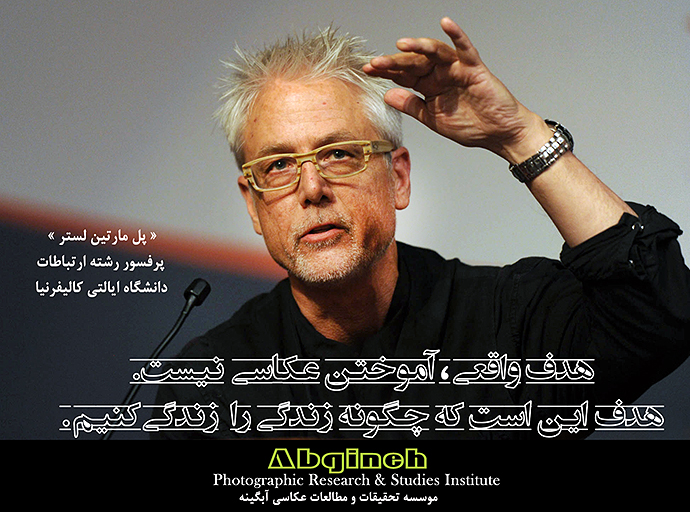
Paul Martin Lester
(born March 21, 1953) is a tenured, full professor of Communications at California State University, Fullerton.
Lester was born in Flushing, Queens. After an undergraduate degree in journalism from the University of Texas at Austin and employment as a photojournalist for The Times-Picayune in New Orleans, Lester received a Master's from the University of Minnesota and a Ph.D. from Indiana University in mass communications. He co-wrote a monthly column, "Ethics Matters" for News Photographer magazine for the National Press Photographers Association. From 2006, Lester was the editor of the Visual Communication Quarterly until 2011 when he was named editor of Journalism & Communication Monographs sponsored by the AEJMC and published by Sage. His research interests include mass media ethics, new communications technologies, and visual communications.
موسسه تحقیقات و مطالعات عکاسی آبگینه
تاریخ خاموش یک اتفاق ساده
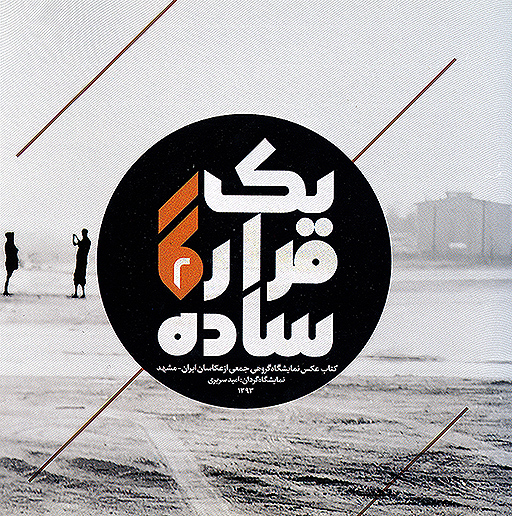
تاریخ خاموش یک اتفاق ساده
این روزها ، شاید معیار و مبنایی برای تعین سطح رشد عکاسی و تاثیر آن بر جامعه ، خیلی مشخص نباشد .افت و خیز ها و تحولات عکاسی در جامعه ای کوچک گاهی دستخوش تغییراتی بزرگ می شوند و شاید گذشت زمان ، موجودیت تاریخی آن در یابد،که تحلیل های متفاوتی را نیز در برخواهد داشت .
یک قرار ساده ۲ پس از تجربه ی پیشین خود ، به لحاظ محتوایی از قرار هایی مهم آغاز شد تاتوانست جایگاه و تاثیرش رابه سادگی در جامعه عکاسی نشان دهد ، روان باشد و پر تفکر . بدون حب و بغض و دسته بندی های استاد شاگردی و مبتدی و آماتور ، بیش از دویست و پنجاه عکاس ، همه در کنار هم اندیشه هایشان را به تماشا گذاشتند. اینک پس از گذشت یک سال چاپ نفیس کتاب عکس نمایشگاه یک قرار ساده از سوی جشنواره صنعت چاپ وانجمن ناشران بعنوان بهترین چاپ مورد تقدیر قرار می گیرد ، کتابی که به سهولت بدین درجه نرسیده است ، ارادت دوستان بزرگواری که در مرحله انتخاب عکس ها ، طراحی ، نظارت چاپ و نمایشگاه گردانی امید سریری عزیز، که صادقانه تلاش نمودند بخشی از تاریخ خاموش مصورعکاسی خراسان را که متاسفانه در زمان خودش مورد بررسی قرار نگرفت ، به نمایش بگذارند، ستودنی است .
خسته نباشید ، ابراهیم بهرامی / مهر /۱۳۹۴
موسسه تحقیقات و مطالعات عکاسی آبگینه
جملات قصار ( احمد خادم الحسینی)
عکاسان برای اینکه در جامعه حرفی برای گفتن داشته باشند ،ابتدا بایستی خودشان را بشناسند. احمد خادم الحسینی
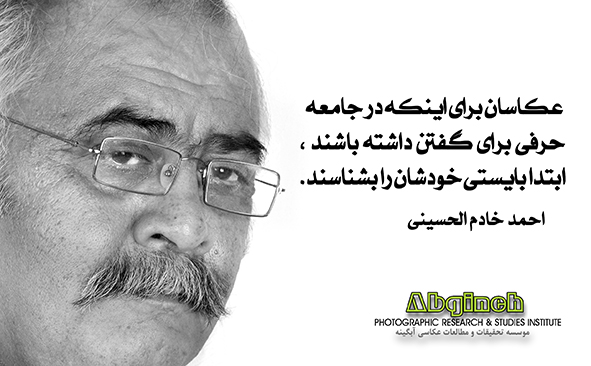
فتوشاپ سی سی Adobe Photoshop CC 2015
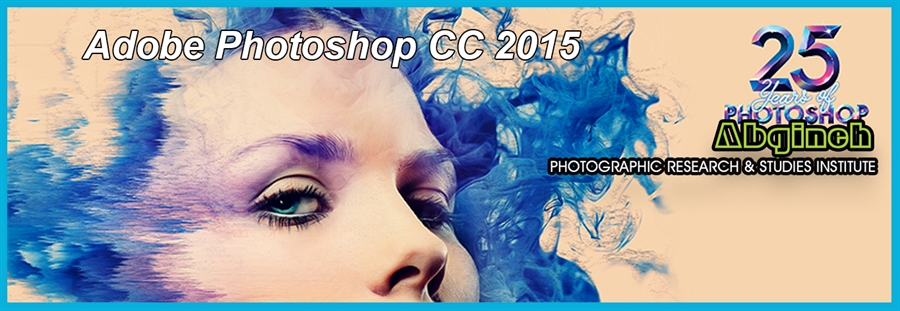
Adobe Photoshop CC 2015
نرم افزار فتو شاپ یک پردازشگر و نرم افزار گرافیکی ویرایش عکس است که توسط شرکت ادوبی طراحی شده و نرم افزار محبوبی برای عکاسان جهت پردازش ، ترکیب، ویرایش، بازسازی و یا دگرگونی تصاویر دیجیتالی می باشد. نرم افزار فتوشاپ به خاطر تنوع ابزارهایی که در اختیار طراحان و عکاسان میگذارد، از محبوبیت و کاربرد بسیاری برخوردار است.
شرکت ادوبی نسخه جدیدی از نرم افزار فتوشاپ را در مجموعه ( Adobe Creative Cloud ) CC ارائه نموده است. فتوشاپ سی سی 2015، تفاوت های بسیار مهمی با نسخه های گذشته فتوشاپ دارد. علاوه بر این ،توانایی فراهم سازی امکانات جدید و رفع مشکلات قبلی این نرم افزار، باعث شده تا نسخه موجود بسیار کاربردی و بهتر از نسخه های گذشته باشد.
در Adobe Photoshop CC 2015 که نسخه شانزدهم، از این مجموعه است ،امکانات جدیدی مانند ، وجود ابزارهای کامل تری برای ویرایش تصاویر، بهره گیری از ابزارهای انتخاب بهتر ، توانایی بزرگنمایی عکس ها، با کمترین افت کیفیت، توانایی کاهش محو شدن حاصل از لرزش دوربین و بسیاری ویژگی های جدید را در خود جای داده است.
بهبود در ایجاد افکت های سه بعدی، اضافه شدن میانبرهای جدید ، رابط کاربری انعطاف پذیر و جذاب تر، بهتر شدن فرایند کار بر ویدئوها و فایل های سه بعدی ، بهبود بهره وری در فرایند استفاده از محیط کار ، ایجاد ابزارهای امکان تبدیل عکس از دو بعدی به سه بعدی با یک فرایند ساده، افزایش گزینه هایی برای چاپ عکس، ایجاد پانل Mask جدید جهت بهینه شدن کار با ماسک ها ، بهینه سازی فرایند ساخت تصاویر پانوراما و تغییرات کلی در ابزار تصحیح رنگ از امتیازات این نسخه از فتوشاپ است.
از قابلیت های دیگر نرم افزار Adobe Photoshop CC 2015 می توان به موارد زیر اشاره کرد :
توانایی شارپ هوشمند Smart Sharpen ، این ابزار دارای تکنولوژی حرفه ای برای افزایش وضوح عکس ها است و موجب افزایش شفافیت و کاهش نویز و محو ی می شود. علاوه بر این ، جهت کاهش محوی تصویر که در اثر لرزش دوربین بوجود آمده و یا عکس هایی که در سرعت پایین شاتر دوربین گرفته شده اند نیزبسیار موثر است.
ارائه پلاگین Adobe
CameraRawبرای ویرایش فایل
های خام و غیر خام ، بصورت یک فیلترو با امکان پشتیبانی از لایه ها و همچنین پشتیبانی کامل تر از Smart Object ها. انتخاب افکت
ها وقابلیت باز گرداندن به حالت قبل ،از امکانات توسعه یافته این نسخه از فتوشاپ
است. در این حالت، شما می توانید به عکس ها و یا ویدئوهای خود افکت های مختلفی
اضافه کنید و هر زمان که خواستید به حالت اولیه باز گردانید. تغییر یا حذف افکت
هایی که ساخته اید بدین ترتیب ساده خواهند بود .
موسسه تحقیقات و مطالعات عکاسی آبگینه - ابراهیم بهرامی
از آدرس زیر می توانید این نرم افزار را دانلود کنید ، حجم فایل 946 مگا بایت ،شیوه نصب نرم افزار در فولدر مربوطه آمده است.
https://www.mediafire.com/?8mf9dxzzd0mzuu3
انسل آدامز
باید روح عکاسان پیشین را از طریق بهترین نمونه های کارشان دریابیم و ارج بگذاریم ، تا به این وسیله کار خودمان را استحکام و انسجام ببخشیم.انسل آدامز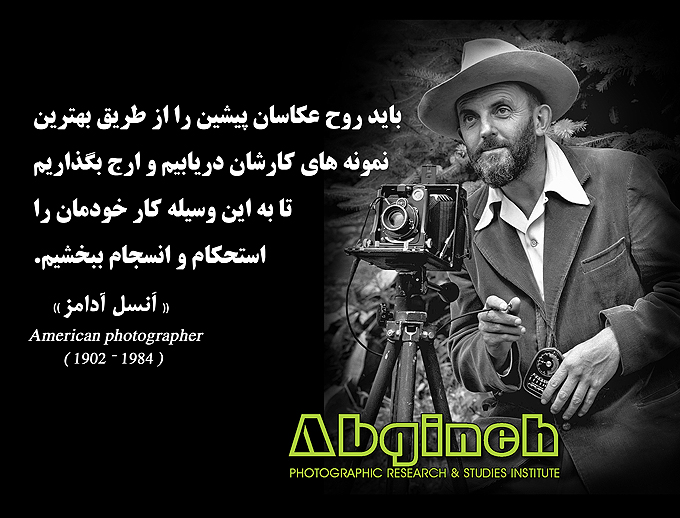
« رهایی تخیلات در دنیای عکاسی خلاقه »

رهایی تخیلات در دنیای عکاسی خلاقه
ابراهیم بهرامی
خلاقیت یک فرایند ذهنی است که برداشت ، نگاه و ادراکات شخصی هنرمند را در بر می گیرد. ذهن خلاق ، فراتر از نگاه های مرسوم ، دنیایی را برای خود باز می کند که می تواند نگاه و تفکراتش را در آن رها کند و آزادانه و به اشکال مختلف دست به آفرینش بزند .
انسان خلاق همیشه در پی کشف رابطه ها ، ابداع و تولید اثری است که برگرفته از استعداد و اندیشه ای درونی وذاتی اوست. خلق کردن همیشه مترادف با ابداع و نوآوری است که از یک تخیل قوی و ذهنی سرشار از ایده های نو سر چشمه می گیرد و اثر او را از آثار مشابه ، متمایز می سازد . این عمل یک ویژگی انسانی است که طی آن هنرمند با گذر از تکنیک های رایج ، طرح یا موضوع را در ذهن خود می پروراند و نتیجه ای نو آورانه ارائه می کند و هنگامی که این ذهن از میان بیان های تکراری رهاشده باشد ، انگیزه ی فراتری برای بیان خلاق به وجود می آورد .
خلاقیت از زمان تسلط شما بر ابزار هنری آغاز می شود و سپس نگاهی نو ، متفاوت و بدور از کلیشه های رایج ، ذهنیتی پویا را بکار می گیرد و در نهایت در یکی از اشکال هنری بروز پیدا می کند. در هنگام آفرینش ، ذهنیت نهفته در درون آدمی برای خلق کردن به تکاپو واداشته می شود تا ارزش های موجود را در قالب های متفاوت که بعضاً به سبکی شخصی نیز می انجامد را عریان کند.
خلاقیت ، رویکردی است که می تواند همه ی گرایش های هنری از جمله عکاسی را هم در بر بگیرد. خلاقیت در عکاسی به یک سبک هنری محدود نمی شود ، چرا که سبک روشی مشخص و منحصر به فرد است اما خلاقیت از اثری به اثر دیگر متفاوت می شود، هر چند وقتی ایده ها ، ذهنیت ها و تکنیک آثار هنری به هم نزدیک می شود می تواند به یک سبک مشخص هم برسد.
گسترش ذهنی در موضوعات مختلف ، انسان را به دنیایی از روش ها برای بیانی بدیع و خلاق هدایت می کند. ذهن باز و گسترده ی هنرمند در عکاسی خلاقه باعث می شود از محدودیت ها عبور کند و در هر کشف و شهودی به ابداع و نوآوری دست بزند . فشردن دکمه ی شاتر برای یک ذهن خلاق ، آغاز یک پایان است.
عکس های خلاقه به دلیل نوع نگاه و ویژگی خاصی که در ارائه ی آن وجود دارد و به لحاظ محتوایی موجب برانگیختن ذهن مخاطب شود ، می تواند در یک دسته بندی به نام عکاسی خلاقه جای گیرد. در بسیاری مواقع می توان در عناصر مختلف عکس ها دست برد و یا با ترکیباتی نو و ابداعی ، آثاری بدیع خلق کرد.
امکانات فنی دوربین ها ، ابزار ها وتکنیک های نرم افزاری ، دانسته های زیبایی شناسانه ، اندیشه ی نوگرا و همچنین ممارست های بصری از طریق دیدن ، از مهمترین نکاتی هستند که با ذهن و اندیشه ی هنرمند آمیخته می شوند وتفکرات او را ساماندهی می کنند تایک اثر خلاق هنری ، ثبت و جاودان شود.
عکاسی اگر به عنوان یک هنر پیشتاز تاکنون پابرجا مانده و توانسته جایگاه خود را حفظ کند ، بخاطر این است که هنرمندان آن از تکرار ، دوری جسته اند و همیشه بدنبال نوآوری و ابداع بوده اند و به مدد همنشینی مسالمت آمیزشان با تکنولوژی ، دست باز تری برای خلق آثاری متفاوت یافته اند. خلاقیت الزاماً در شیوه ای خاص که تعریف مشخصی داشته باشد صورت نمی گیرد ، بلکه این مفاهیم ، نگرش و رویکردی است که می تواند همه دسته بندی های عکاسی را در بر گیرد. عکس های ذهنی ، خیالی ، وهم انگیز ، فراواقعی، مستند اجتماعی ، طبیعت ، پرتره ، خبری و مطبوعاتی و هر نوع دیگری که با نگرشی نو و از طریق رسانه ی عکاسی بپردازند ، می توانند عکس های خلاقه باشند. گاهی خلاقیت می تواند در عین سادگی از یک عکس اجتماعی که با تاکید بر زیباشناسی تصویر و نگاه عکاسانه تهیه شده و یا عکسی از طبیعت که هیچ تمهیدی از تکنیک های ابزاری یا نرم افزاری را در خود ندارد ، نمود پیدا کند.
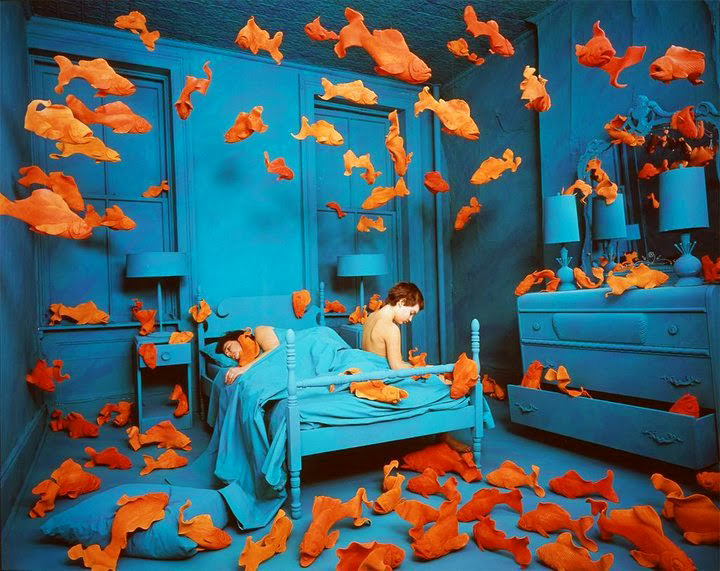
خلاقیت در عکاسی می تواند در شکل های مختلف بیانی و تکنیکی زیر بررسی شود :
الف : تکنیک های حین عکاسی : این تکنیک ها شامل تمامی روش هایی است که از توانایی فنی دوربین بهره گرفته شده اند و عکاس می تواند آنها را به خدمت موضوع یا محتوا و به صورتی خلاق و نوآورانه ارائه نماید.
مانند : استفاده ی آگاهانه از سرعت های مختلف شاتر دوربین ، دیافراگم ، لنز ، فلاش ، نوردهی های چند تایی و طولانی ، ایجاد جلوه ی محوی در پیش یا پس زمینه ، حرکت های کاربردی دوربین بصورت افقی و عمودی در هنگام ثبت تصویر، تکنیک های کم نوردهی یا بیش نوردهی یرای رسیدن به سبک های مایه تیره« Lowkey» و مایه روشن« Highkey» انتخاب حالت های مادون قرمز ، سیاه و سفید و یا تک رنگ در دوربین های دیجیتال و توانایی های دیگری که در اینگونه دوربین ها به آن افزوده شده ، تصاویر عکاسی شده را به انتزاع می کشد.
ب: تکنیک های پس از عکاسی : این تکنیک ها که مکمل های بیانی آثار عکاسی شده هستند ،کمک بزرگی در ارائه ی خلاقانه ی آثار عکاسی می کنند . توانایی بی شمار نرم افزار های دیجیتال که توانسته بستر وسیعی را برای بیان خلاقه ، به هنر مند عرضه کند. امکان تغییر، ترکیب دو یا چند عکس با یکدیگر ، ایجاد انواع لبه های همسو با محتوای عکس به جای فریم های مرسوم، تهیه تصاویر سیاه و سفید ، تک رنگ ، مادون قرمز ، و تغییر در تنالیته های عکس از تصویر اصلی دیجیتال ، امکان ایجاد حس حرکت ، عمق و بُعد از طریق تولید افکت های خلاق توسط عکاس، کاهش و افزایش محوی در بخش هایی از تصویر ، ایجاد تکنیک های مایه تیره « Lowkey» و مایه روشن« Highkey» بر روی عکس هایی که نوردهی آنها بصورت صحیح انجام شده ، از مواردی است که عکاس می تواند با بکارگیری خلاق این روش ها ، دنیایی متفاوت را در آثارش ارائه کند.
ج: بهره گیری از عناصر و روش های زیبایی شناسی تصویر و نگاه عکاسانه : در این نوع ارائه، عکاس بدون کمک گرفتن از هرگونه تکنیک خاص ابزاری و نرم افزاری ، به بیان خالصانه ی یک موضوع بر اساس اصول زیبایی شناسی و ساختار های شکلی عکاسی (نگاه عکاسانه ) می پردازد. مانند : انتخاب زاویه ی دید متفاوت و خلاق در راستای موضوع ، انتخاب عوامل و عناصری که تاثیر قوی گرافیکی و عکاسانه داشته و در کادر دوربین به شکل خلاقانه ای محصور شده باشند. ایجاد یک ترکیب بندی خلاق از طریق چیدمان و ساماندهی عناصر در تصویر، انتخاب آگاهانه ی رنگ ، بی رنگی ، تک رنگ ، سایه روشن ها و فرم های گرافیکی ، ایجاد تداعی حس بعد سوم ، حس حرکت و توازن از طریق چیدمان صحیح عناصر و انتخاب لحظه ی تعیین کننده در ثبت موضوعاتی گذرا و تکرار نشدنی.
د : رجوع به روش های هنری: این روش ، با بهره گیری از یک رویکرد و نگاه خاص هنری صورت می گیرد. بسیاری از گرایش های عکاسی همچون عکاسی ذهن گرا « subjective» ، که از ذهنی پویا برای رسیدن به معنا سرچشمه می گیرد ، عکاسی تخیلی یا وهم گرا « illusionism» ، که بیشتر حالت خوابگونه و رویاییرا تداعی می کنند، موضوعاتی فراواقعی « surrealim» ، که ترکیبی از دنیای ذهنی و واقعی هستند ، عکاسی انتزاعی « Abstract» ، که مجموعه آثاری را در بر می گیرد که منتزع از واقعیت هستند و همچنین عکاسی تجربی « Exprimental» ، که ترکیبی از تخیلات و احساسات همراه با بکار گیری صحیح تکنیک در خدمت محتواست ، از روش های هنری برای دستیابی به نگاهی خلاق می باشند که عموما مرز های مشخصی هم ندارند.
همین که بسیاری از عکاسان اراده ای برای ثبت تصاویرشان با نگاهی متفاوت دارند ، نشان می دهد که می خواهند فراتر از واقعیات ملموس و روزمره ، میدان وسیعی برای بیان ایده های خلاق خود فراهم آورند و با در هم آمیزی تکنیک ها ، ایده ها و تفکراتشان ، دست به آفرینش بزنند. یک هنرمند نمی خواهد مخاطبش در برابر او منفعل باشد ؛ لذا هر بار سعی می کند ذهن خود را پویا نگه دارد و نگاه خلاق خود را به سمت و سویی ببرد که مخاطب ، اثر او را در خود حل کندو یا حداقل به تفکر و تعمق وا دارد. ابراهیم بهرامی/موسسه تحقیقات و مطالعات عکاسی آبگینه
یادی از صادق تیر افکن
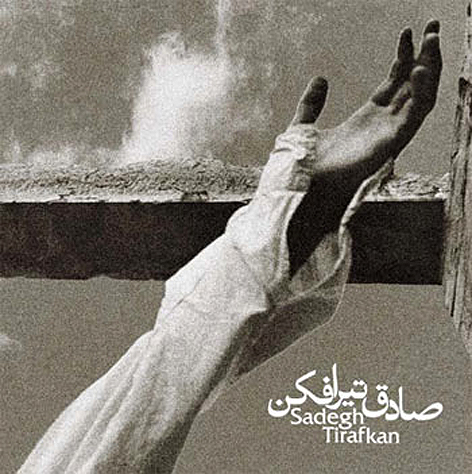
یادی از صادق تیر افکن
صادق تیر افکن ، فارغ التحصیل رشته عکاسی از دانشگاه تهران ، در بسیاری از آثار خود از تکنیک فتومونتاژ یا فتوکلاژ استفاده می کرد و علاوه بر آن، ( اینستالیشن) چیدمان های هنری او نیز در نمایشگاه های مختلف دنیا به نمایش درآمده است. آثار وی در نمایشگاههای انفرادی و گروهی متعددی، از جمله در تهران، پاریس، تورنتو، نیویورک و بروکسل به نمایش درآمده ودر پانزدهمین دوسالانه بینالمللی هنر آسیایی ۲۰۱۲ بنگلادش موفق به دریافت تندیس دوسالانه، مدال طلا، دیپلم افتخار و جایزه نقدی این دوسالانه شده است. با همه ی انتقاد هایی که به آثار تیر افکن می شد ، وی در راه رسیدن به اندیشه هایش تلاش می کرد و برای دست یابی به رویکرد هایی جدید از پا نمی نشست. صادق تیر افکن به دلیل بیماری سرطان در سن۴۸ سالگی در تورنتو کانادا درگذشت.
